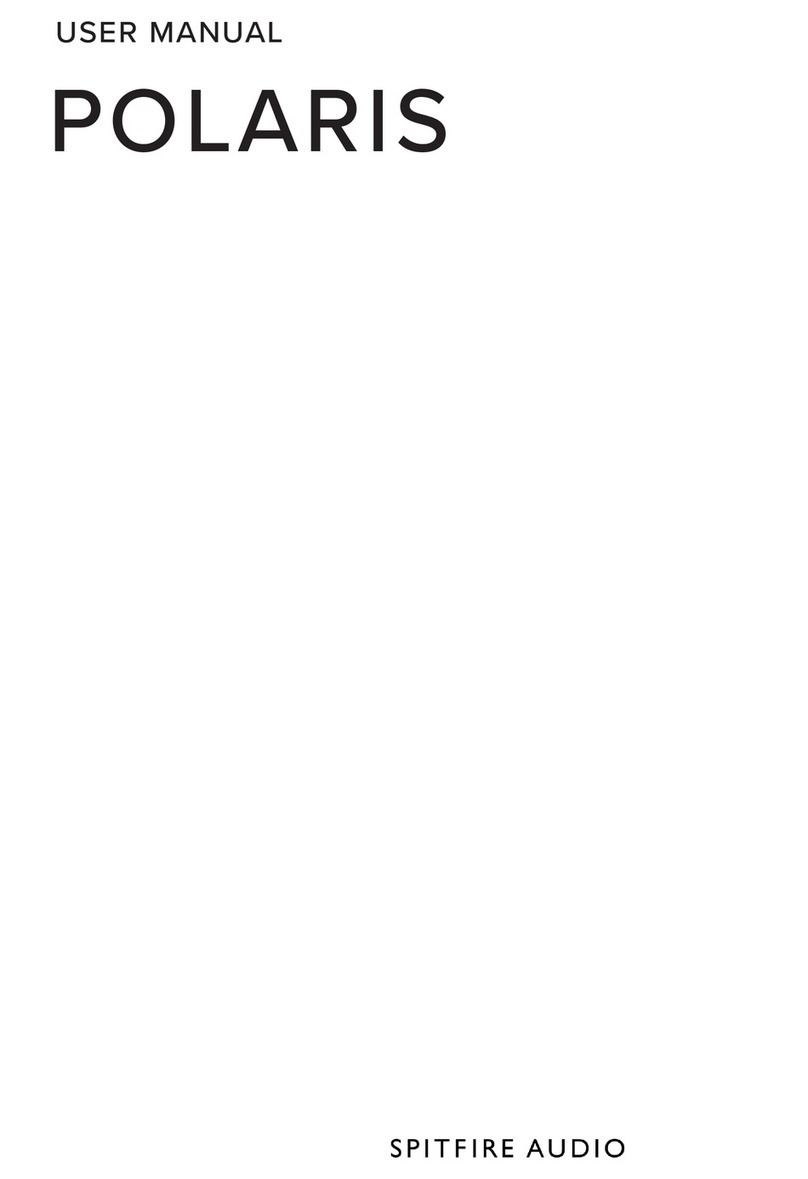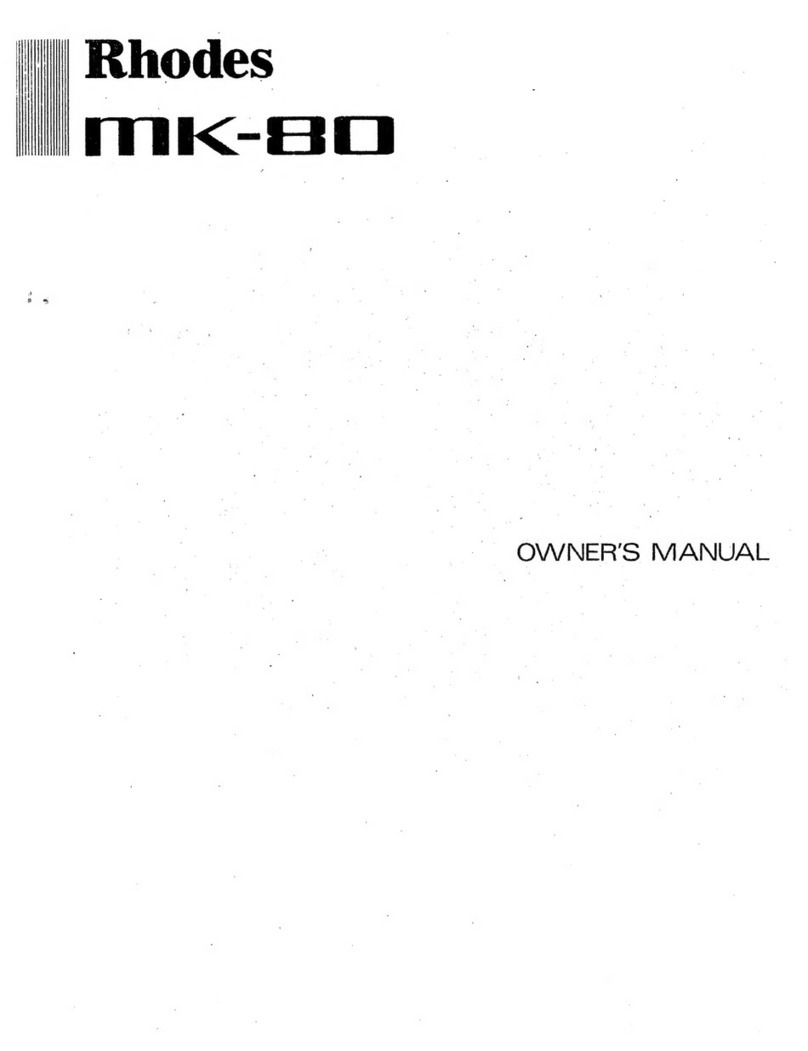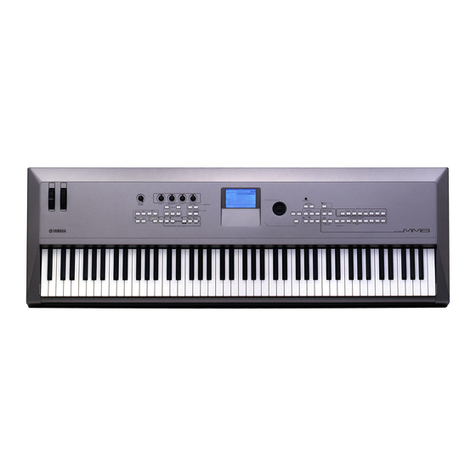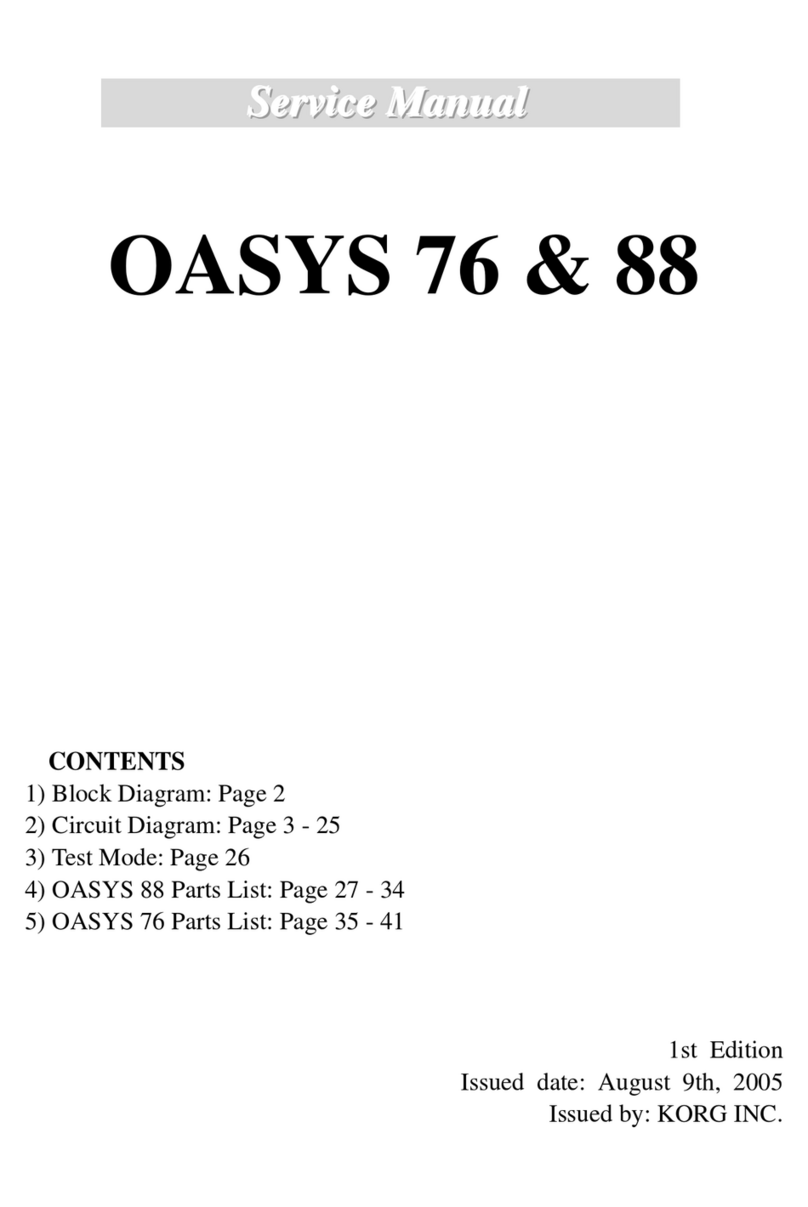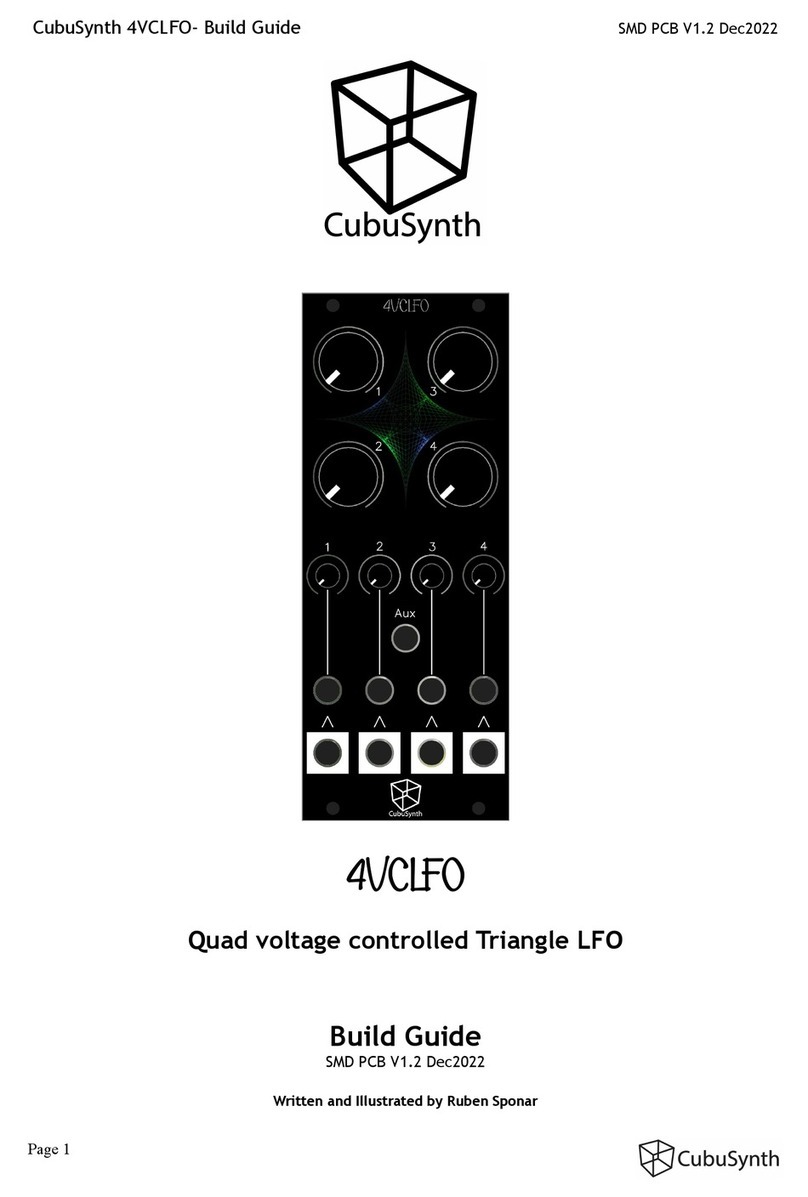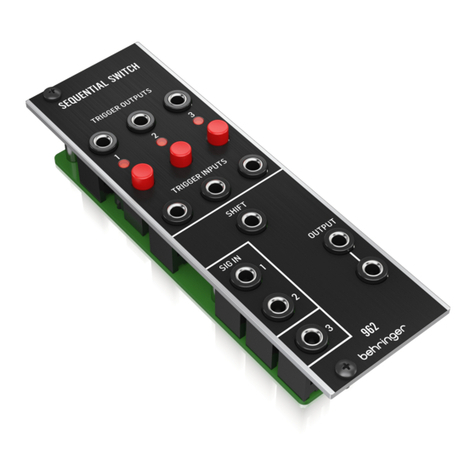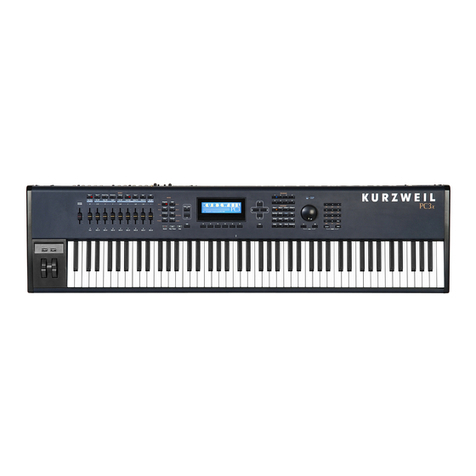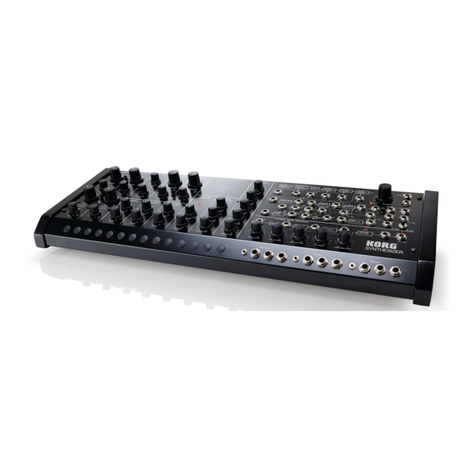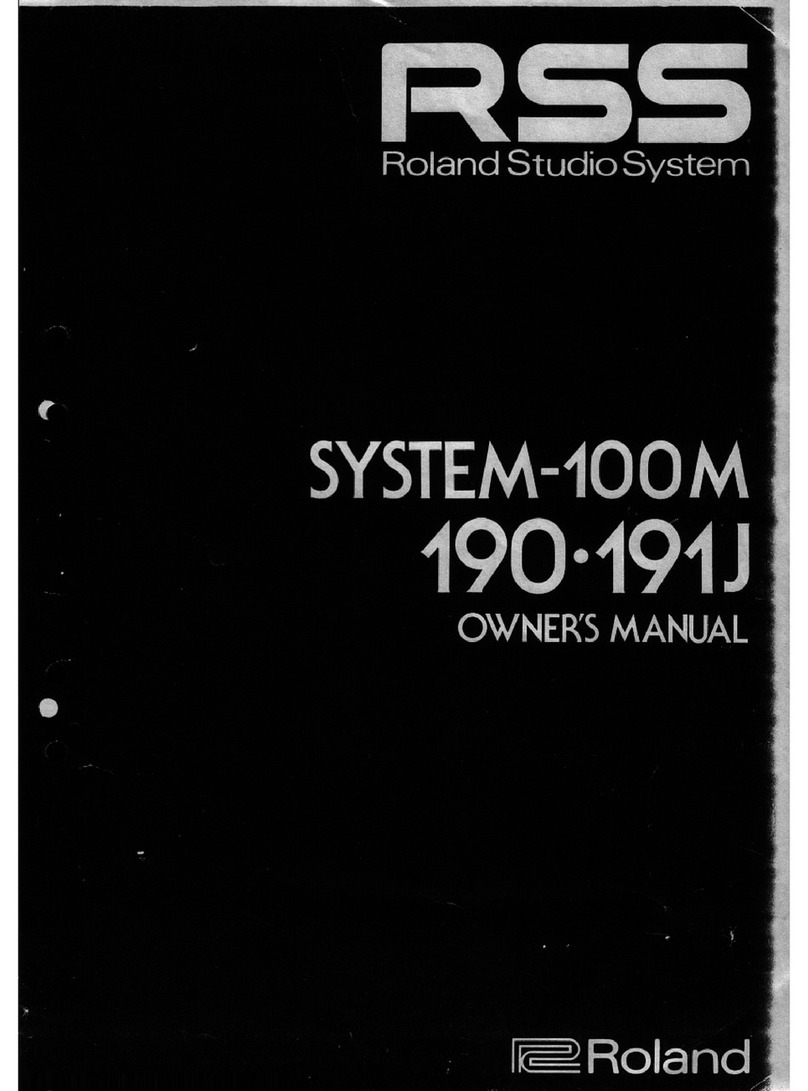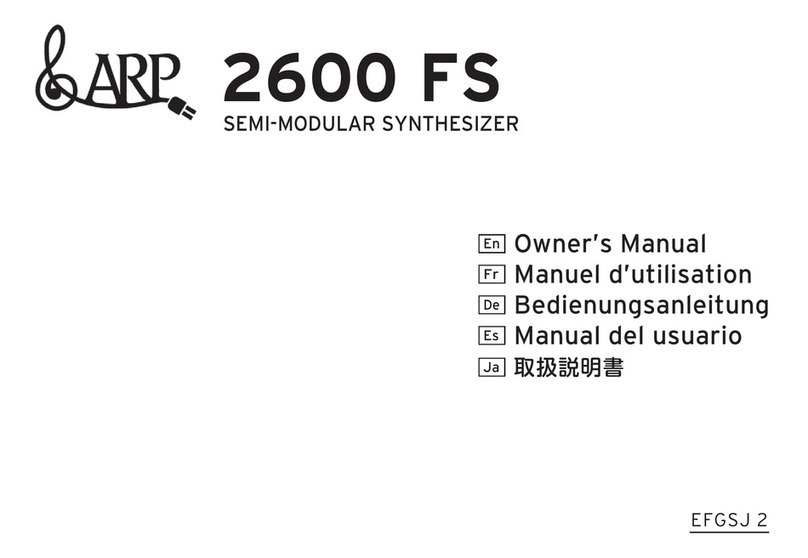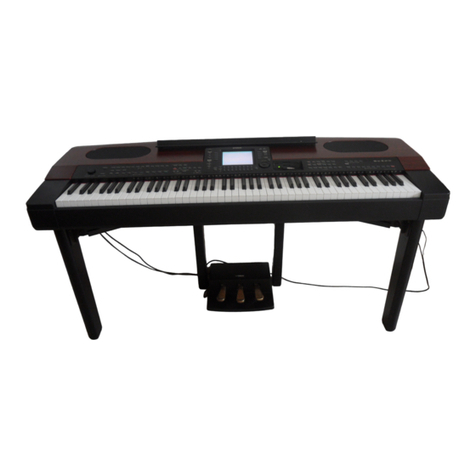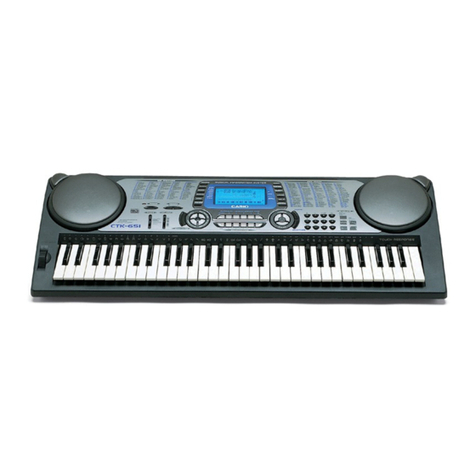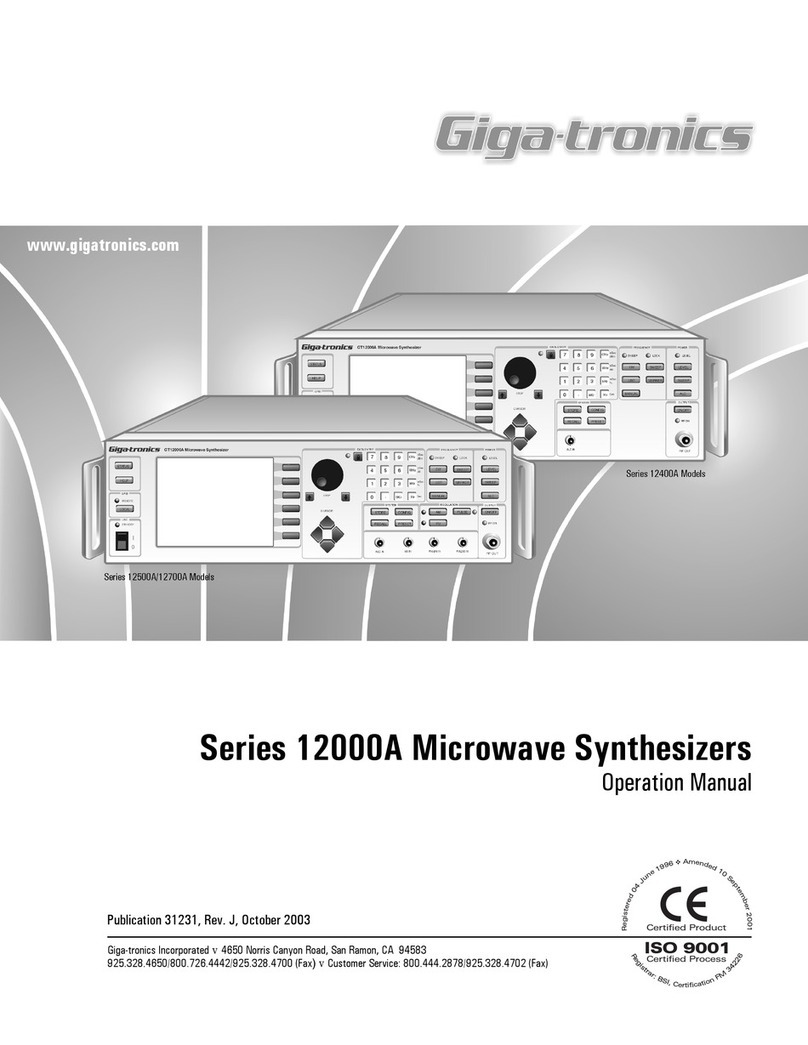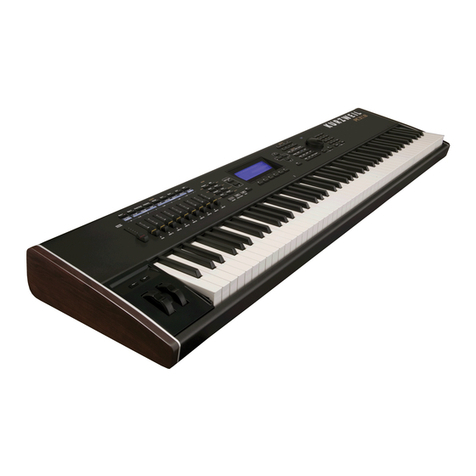SPITFIRE AUDIO BT PHOBOS User manual

SPITFIRE AUDIO
BT PHOBOS
POLYCONVOLUTION SYNTHESIZER
USER MANUAL

PAGE 2
PHOBOS - USER MANUAL
CONGRATULATIONS
Thank you for purchasing BT - PHOBOS. Phobos is a must-have synthesizer for composers writing epic, cinematic electronic and hybrid
compositions. Conceived by renowned composer and electronic music pioneer BT (The Fast andThe Furious, Monster,Lara Croft:Tomb Raider),
we’ve together developed a powerful new device to add a unique timbral expansion to your compositions by unlocking the liquid, morphing
and transforming capabilities of convolution.With an asset base featuring over 20GB of unique hand built BT rhythms, pulses, textures and
atmospheres and a revolutionary polyconvolver engine, you can quickly and easily create molecular loops, patterns and textures to energise
your music and hold your audience at the edge of their seats.
• 2422 Samples.
• Disk space required: 22.85GB.
• Disk space required during install: 46.00GB.
• Totally new dedicated plugin.
• Self optimisation.
• Unique Access to BT’s enormous archive of sounds.
- Presets designed by BT himself.
- Presets designed by industry leaders.
• Number of presets: 716
• Number of Source Sounds: 2381
• 4 Slots for Source Sounds.
• 3 independent Colvolvers.
• Load any included loop/pad/sound as an impulse into a
convolver.
• 90,471,680,541,391,700,000 possible combinations of
sounds.
TABLE OF CONTENTS
WELCOME 3
DOWNLOADING & INSTALLING 4
AN ALL NEW PLUGIN 6
A QUICK LOOK 7
YOUR FIRST ‘TOUR’ 8
BROWSING 9
SOUND SOURCES 1,2,3,4 10
CONVOLVERS W,X,Y 11
THE CONVOLUTION TRIANGLE 12
KEYBOARD RANGE 12
MASTER CONTROLS 13
HOW TO ASSIGN CONTROLS & AUTOMATE 14
ADVANCED SOURCE SOUND CONTROLS 16
ADVANCED CONVOLVER CONTROLS 18
GLOBAL LFO CONTROLS 20
APPENDIX A - FAQS & TROUBLESHOOTING 21
Quick Specs

PAGE 3
PHOBOS - USER MANUAL
WELCOME
Together with Spitre, BT has combined over 20GB of his own
personal bespoke new libraries (following on from Breaks from
the Nu Skool and Twisted Textures) into a convolution synthesis
engine that allows you to sculpt, lter, rhythmically cut and pulse
impulse responses that are tonal, melodic and harmonic. Most
importantly you can play them polyphonically.
This synthesizer, sound engine and bespoke library package rep-
resents years of diligent searching for new awe-inspiring sounds
and sound design techniques. If you, like BT, are looking for a
new wave of inspiration for your compositions that is evocative,
emotional, expressive and truly new, you owe it to yourself to
check out Phobos. It is a well of endless inspiration.
One of the greatest solutions Phobos provides is for compos-
ers wanting to engage their audiences for extended sequences
and cues without things sounding repetitive or ‘loopy’. Phobos
allows for an all new real-time interface interaction that allows
the user to evolve, warp and transform their molecular patterns
according to nuanced changes within a scene.
What is Phobos?
One of Mars’ moons? A synthesizer? A tool for creating mas-
sive cinematic and electronic rhythms? An engine for endless
spectral combinations of wide, lush pads and ambiences with
propulsive rhythmic gures? Is it a sound library of bespoke per-
cussion, beats, micro rhythms, eld recordings, live acoustic and
orchestral treatments, textures and a massive vintage synthesiz-
er collection? That is just scratching the surface.
At its core, Phobos is a synthesizer based on the unexplored
precept of polyconvolution as a synthesis engine. BT came up
with this idea many years ago doing sound design.
What does that mean exactly? Polyconvolution as a synthesizer?
Well, it means instead of using convolution for reverb or mod-
eling an amplier’s distortion circuit, why not make a “reverb”
impulse response tonal?
Combining something rhythmic with something tonal (as an im-
pulse response) yielded some of the most modern, liquid and
percolating ambiences and textures BT had ever heard.These
are the kinds of sounds he has been searching for whilst scoring;
those elusive sounds where the director asks for “movement
and a feeling of drive, yet subtly”. That’s not to say that Phobos
only excels at subtlety - it can sound massive, driving and aggres-
sive, like an army of monsters in its scope and power.
ABOUT BT
BT is the earliest of early adopters and widely accredited as a
maven of modern sound techniques. “There is a very specic
lineage of great composers who blazed a new path in music be-
cause they weren’t afraid to experiment with new sounds, new
techniques and new technologies. These progenitors – Cage,
Stockhausen, Xenakis – are the people who set the foundation.
Let’s not forget that the piano was a radical new technology in
its time. I had a music theory teacher as a boy who once said
to me, ‘Nothing new will ever happen in the arts again. It’s all
about studying what’s already been done and how you combine
things.’ I don’t think I slept for weeks after that. I knew that was
an incomplete idea and set out to prove it wrong ever since.”
An avid lover of both mathematics and physics, BT looks for in-
spiration by experiencing natural phenomena, frequently discov-
ering complex mathematical patterns and structural relation-
ships in everyday objects and environments that are often taken
for granted. “I nd things in the natural world that resonate with
me on a very humanist level, those things are typically the core
drive for the creation process. My music is an expression of that
awe and admiration of the natural world”, he explains. “Quite
simply, music is applied mathematics. It is aesthetically beautiful
as well as practically beautiful. Rhythm, harmony and structure
are all mathematical and math, quite simply, is beautiful.”
Connection
“I am looking for the symmetry between patterns that are em-
bedded in the natural world and emotions, feeling states and
the human condition. I think my life’s work is about dissecting,
studying and dening that overlap. Music and mathematics are
two sides of the same thing. I am constantly looking for a meet-
ing point of these two ideas,” BT claries. “I am looking for the
symmetry between patterns that are embedded in the natural
world and emotions, feeling states and the human condition. I
think my life’s work is about dissecting, studying and dening
that overlap.”
“My ultimate goal is to keep the emotional counterpoint and
the integrity of the song intact, even when pushing the envelope
with style and technique. The faster things get, the less people
are willing to take in a body of creative work. How many people
can stand in front of a painting and deeply take it in? There are
so few things now that will engage us.The intent of consuming
music is usually to have an awareness or a feeling, to have an
truly, empathic connection to others.Whatever it is that you’re
going through, music makes you feel less alone.You feel a pri-
mordial connection to people and the natural world. My hope
is to create something that makes people feel that they have
consumed something that completes a void. I want to create
something lasting.”
FEATURES
Revolutionary polyconvolution synthesizer, across 3 separate
convolvers.
Contains 2381 unique sounds, created by BT, that can be used
both as a source or as an impulse response.
716 presets showcasing the possibilities of Phobos.
Plugin that loads directly into any DAW that supports VST /
VST3 / AU / AAX.

When you launch the app you will be prompted to sign in using
the same details you use at our site.Then you’ll see your avail-
able products:
Once you have selected what you wish to download on the left
pane and clicked the ‘download’ button you will have the option
to select a location for the sample content.
A default location will be generated but you’ll most likely want
to change this.Here’s how! Click on the two little vertical arrow-
heads to the right of the default location.You will be presented
with the following options, and you’ll want to click ‘CHOOSE’.
If you have purchased the product on a hard drive, at this point
you will need to point the library manager at the location you
copied the sample content to.
Once you’ve selected the location you can proceed with the
download. NOTE THAT THE DOWNLOADER WILL CREATE
A SUB FOLDER FORYOUR LIBRARY IN THE LOCATION SE-
LECTED.This is important: if you have a multi part library, or an
update, it means that the Library Manager app will look INSIDE
the selected location for your library folder. If it’s not there,
it will create a new library folder. So, if you mistakenly select
the actual library folder itself when adding content or doing an
update, instead of the location (one folder level up) that CON-
TAINS this library folder, you’ll end up with a nested mess!!
TOP TIP:You will need approxTWICE the amount of hard drive
space as the library uses (see the product page on our site for
this info) to download: this is because the zip les are all down-
loaded, and then unzipped.This process takes a while so don’t
panic if it looks like it’s frozen!
TOP TIP 2: If you get in a total mess you can reset the download
of either the whole library or just the latest update from the ‘Li-
brary’ menu of the app.This is limited to a couple of downloads
as bandwidth is expensive! Please only do this if you actually
need to.
You’ll also see an option to Change Install Location, if you se-
lected the wrong one.You can hit the PAUSE button at any time
to pause the download, then select CHANGE INSTALL LOCA-
TION and the app will move all the downloaded les to the new
location. Once it has nished you’ll be prompted if you want to
proceed,THEN you can hit the RESUME button to continue the
download in the new location.
Once everything is downloaded, the Library Manager will place
the plugin les that it needs to enable the product to work in
the right locations on the computer and authorise the library. If
you ordered the hard drive, the Library Manager will have only
downloaded any missing les (of which there should be none
or very few) and then moved the system les to the correct
location.
DOWNLOADING & INSTALLING
Thank you for buying this Spitre product. If you are a total newbie to this kind of thing you can get up to speed here:
spitreaudio.com/info/basics/
If you have ordered the product on a hard drive, the rst step is to copy the content onto your computer or the drive that you
wish to play your samples from.
If you have ordered the product as a download, the Library Manager will download the product as well as install and authorise it.
Grab our ‘Library Manager’ app from this link: spitreaudio.com/info/library-manager/
PAGE 4
PHOBOS - USER MANUAL

INTRODUCTION
Using the Manual
In a number of places through this manual you will see this logo:
This means that there is extra video content that we feel might help you while you use the product on the following page:
spitreaudio.com/manuals-archive/bt-phobos/
A word on Polyconvolution
So what is convolution?
In mathematical terms it is used to refer to an operation on two functions producing a third function. In audio, convolution is usu-
ally mentioned in reference to an impulse response taken from a physical space, applied to a sound in order to simulate the reverb
characteristics from that space. In Phobos, we convolve one sound with one or more others to produce totally new sounds.
What is Polyconvolution?
In Phobos there are four Source units.You can see them numbered 1 - 4 at the top of the interface. Each Source unit can load
either a Loop or a Tonal sound.
When a loop is loaded into a Source unit the same sound plays regardless of which key is pressed.The pitch of Loop sounds is not
directly affected by the key used to trigger the sound.
When a Tonal sound is loaded into a Source unit its maximum polyphony is determined by the number of keys in its key range
and any overall polyphony limits that have been congured in the Settings page. The pitch of Tonal sounds is adjusted to match the
key that was used to trigger the sound.
There are three Convolver units which appear in Phobos at the three points of the central triangle. Each Convolver unit can load
any of the same Loop or Tonal sounds.
These Convolver units are slightly different from conventional convolution reverb-like effects. In a similar way to the Source
units, the Convolver units are polyphonic.This means that for each key that triggers one of the Convolver units a separate and
new impulse response is created. This impulse response will be generated on the y. This is what we mean by the ‘polyconvolution’
engine in BT Phobos.
PAGE 5
PHOBOS - USER MANUAL

PAGE 6
PHOBOS - USER MANUAL
AN ALL NEW PLUGIN
The image above shows how you would open Phobos in Apple’s Logic Pro X. We’ve clicked on software instrument and have
scrolled to the stereo version of Phobos via the new dedicated ‘Spitre Audio’ Folder.
Unlike many Spitre libraries, you don’t need Kontakt Player or the full Kontakt to run this library. Phobos is its own, all new, self
contained plugin built forVST,AU and AAX, so once you’ve downloaded and installed you’re ready to go.

PAGE 7
PHOBOS - USER MANUAL
A QUICK LOOK
Whilst we know Phobos is going to have you tweaking and con-
volving into the wee hours we’re all here because of BT’s chops
as a sonic architect. So without further ado here’s the box you
need to click on to start getting to grips with what this bad boy
can do. Here is where you will nd the 716 presets designed
by BT himself and luminaries including Richard Devine. Scroll
through names and themes or return Phobos to its “Default
State”
SHE’S A BEAUT’!
This is where your understanding of synthesis, sampling, convo-
lution and the pre-understood ideas of what a loop, a tone or
an atmosphere are will be challenged.
Each Phobos preset is constructed from up to four sound
sources (1,2,3,4) put through up to three convolvers (W,X,Y)
depending on where the sounds are placed in the central con-
volution triangle.
OPENING YOUR FIRST PRESETS.
4.

PAGE 8
PHOBOS - USER MANUAL
YOUR FIRST ‘TOUR’
SOUND SOURCES 1,2,3,4
CONVOLVERS W,X,Y
CONVOLUTION TRIANGLE
MASTER CONTROLS & KEYBOARD RANGE
To give a simple intro into the world of Phobos, it starts at the
Sources, which are triggered depending on their individual Key-
board Range, get processed through the Convolvers (with the
mix of this controlled by the Convolution Triangle) and then fed
direct to the output.
The Source section is where the signal starts, with four separate
sources (1 to 4) that can be mixed and fed into the three Con-
volvers (W, X and Y).

PAGE 9
PHOBOS - USER MANUAL
SELECTING SOUND SOURCES 1,2,3,4 & CONVOLVERS W,X,Y
BROWSING
The two dropdown menus below the text eld allow you sort
by original key or tempo range. Selecting different lter options
from the list of categories on the right hand side will show you
all the sounds that match those tags on the left hand side.There
are also two global tags to select the looped, tempo-matched
material (‘BT LOOPS’) or the pitched tonal material (‘BT TON-
AL’). ALT-CLICK on the sound to audition it before loading it
into Phobos.
If you hear something and you want to search for similar types
of sounds, then click ‘List Similar’ and the browser will show you
the tags corresponding to that sound.
To remove a sound from any of the sources or convolvers you
can ALT-SHIFT click on the name section (as you roll over the
name while holding ALT-SHIFT it will display “REMOVE WAVE”).
To reset the parameter values for only one of the sources or
convolvers at a time you can ALT-SHIFT click on the corre-
sponding 1, 2, 3, 4, (which will display “R” when you roll over the
button while holding ALT-SHIFT).
Phobos challenges the convention of loops, tonal patches and how they are used in convolution which is why when clicking on the
name of any of the sound sources OR any of the convolvers, you will be greeted with exactly the same browser...

1. 5.
6.
7.
8.
9.
10.
3.
4.
2.
PAGE 10
PHOBOS - USER MANUAL
1. SOURCE NUMBER
The source number corresponds to the sound source number
in the convolution triangle. Click on this to bring up the source
sound ‘controls’ screen discussed in the ‘Advanced Source
Sound Controls’ chapter.
ALT/SHIFT/CLICK on this if you want to reset the settings you
have made for the sound.
2. SOUND SOURCE NAME
Click on this to bring up the browser as discussed previously.
ALT/SHIFT/CLICK to remove.
3. A,D,S,R
These diamonds control the Attack, Decay, Sustain & Release
of a sound.The A,D&R control how quickly the sound changes
so go left to right, the sustain is a level control so goes up and
down. Attack controls how the sound comes in, decay deter-
mines how long it stays at full volume before dropping to the
sustain level. Release governs how quickly the sound dies away
when you let go of the key.You can adjust the curve of the attack
and release by clicking and dragging up and down on the graph.
4. MAPPINGS
This opens the modulation mappings settings discussed in the
‘How To Assign Controls and Automate’ chapter.
5. HPF
Or ‘high pass lter’, this is a lter that allows the higher frequen-
cies (depending on where you set it) to come through whilst
ltering out the low. With BT’s super fat sounds this is a handy
‘jump on’ knob to control the bottom end. Double click on the
value to enter a specic frequency.
6. WET
Whilst the convolution triangle controls which source sound
goes through which convolver, the source sound still has its own
dedicated mix stage. ‘WET’ allows you to balance how much
pure convolved signal you can hear for the sound source while...
7. DRY
...controls the amount of pure unconvolved signal you can hear.
Double click on the value to enter something specic.
8. MUTE
Mutes the source sound.
9 &10 RANDOM SELECTORS
For instant gratication there are also two randomiser buttons.
Clicking ‘Wave’ will randomly select a sound from the whole
collection and load it in place. Holding “alt” while clicking this
“Waves” button will limit the selection to the sounds in the “BT
LOOPS” category. Holding “shift” while clicking this “Waves”
button will limit the selection to the sounds in the “BT TONAL”
category.
Clicking ‘Params’ will randomise the parameters on the sound
by ±10% of the current value.
SOUND SOURCES 1,2,3,4

1.
3.
4.
5.
2.
6.
7.
8.
9.
10.
PAGE 11
PHOBOS - USER MANUAL
CONVOLVERS W,X,Y
1. WAVE FORM DISPLAY
2. CONVOLVER
This signies which of the three convolvers you’re editing. Click
on this to bring up the controls panel discussed in the ‘Ad-
vanced Convolver Controls’ chapter.
ALT/SHIFT/CLICK on this if you want to reset the settings you
have made for the sound.
3. CONVOLVER NAME
Click on this to bring up the browser as discussed previously.
ALT/SHIFT/CLICK to remove.
4. OUTPUT
Whilst the convolution triangle controls which source sound
goes through which convolver, and the sound sources can con-
trol the amount they’re affected by the controller, the convolv-
er still has its own dedicated mix stage to control the overall
volume of the convolver against the others and the dry source
sound signals.
5. PITCH
Controls the pitch of the convolver waveform. Hold shift for
ne tuning or double click to enter a specic value.
6. A,D,S,R
Works just the same as with source sounds.
7. RANDOM WAVE & PARAMS
Again, for instant inspiration you can shake it up and randomise
convolver selection just like you can with source sounds.
8. MAPPINGS
This opens the modulation mappings settings discussed in the
‘How To Assign Controls and Automate’ chapter.
9. HPF
To give you ultimate control, alongside source sounds you also
have a high pass lter stage on each convolver.
10. MUTE
Mutes the convolver.

1.
2.
3.4.5.6.7.
PAGE 12
PHOBOS - USER MANUAL
THE CONVOLUTION TRIANGLE
At the centre of Phobos is the ConvolutionTriangle.Each Source
is represented on theTriangle by a ‘puck’ with the number of the
source sound on it.The placement of the puck on the Triangle
controls the level sent to each Convolver.
The top left of the triangle controls levels to controller W, the
top right X and the bottom W. So for an equal mix between the
three Convolvers, place the puck in the centre of the Triangle
(DOUBLE-CLICK on the puck). To have Source 1 processed
only by convolver W, place the ‘1’ puck in the top left corner
as illustrated.
The Keyboard Range section dictates which range on the keyboard triggers which Sources and Convolvers.With the range spread
across the whole keyboard, all Sources and Convolvers are triggered by the whole keyboard, but with interesting placements, you
can use the Sources as triggers for the Convolvers, or even separate different sounds onto different octaves.
1. SOURCE SOUNDS
These four lines represent the ranges of each of the four source
sounds 1,2,3,4.
2. CONVOLVERS
These three lines represent the ranges of each of the three
convolvers W,X,Y.
3. RANGE NODES
Grab these from the left and right end of the range to deter-
mine what source sound and convolver sits where.
4. KEY INDICATORS
These will light up when certain keys are being played.This key
is always shaded to illustrate middle C (C4).
5. KEY RANGES
These indicate exactly which ranges you’ve determined.
6 & 7. CONTROLLERS MOD & PITCH
Indicating and controlling modulation and pitch.
KEYBOARD RANGE
spitreaudio.com/manuals-archive/bt-phobos/

1. 8.7.6.
2. 3. 4. 5.
PAGE 13
PHOBOS - USER MANUAL
MASTER CONTROLS
The master controls section is split on the left and right hand side of the interface.These controls affect the entire instance of the
plugin and / or preset.
1. PRESET BROWSER
As shown before, this is where you get to browse through the
awesome array of presets we’ve prepared for you. Use the ar-
rows to skip through them incrementally.
ON SAVING YOUR OWN PRESETS.
USE YOUR DAW’S PRESET SAVING SYSTEM.
In this screen grab Christian is saving his new preset ‘Shefeld
‘78’ in Logic
2. SETTINGS
Phobos is a clever beast.When you boot up it checks out your
system and optimises itself accordingly, so you get the very best
out of this revolutionary synth. If you click on settings you can
check out what it has set itself to and tweak if you want.
3. ABOUT
Contains our end user license agreement as well as a link to our
webpage, containing this very manual!
4. LFOS
Contains all the settings for the LFOs that can be assigned in
the modulation mappings. All the LFO frequencies are locked
to your host tempo for ease of use with various adjustments
that can be made to also help throw them off the grid! See the
“Global LFO Controls” chapter to delve deeper.
5. MPE MODE
This is a toggle button that enables or disables MPE (Multidi-
mensional Polyphonic Expression) support for devices such as
the Roli RISE or Roger Linn LinnStrument.
GAIN
Or trim, or even volume! This sets the overall output of the
plugin.
PITCH
Turn the dial to coarse tune by semi (half) tones. Press shift then
move the knob to ne tune by cents.
MIDI CHANNEL
This sets the channel that the plugin recieves at. In most circum-
stances channel 1 is a standard default for your DAW.
NB It is advised that you keep this in channel 1 when using MPE as
this denes the MPE master channel. Obviously if your MPE device
has a different MPE master channel, adjust Phobos accordingly.

PAGE 14
PHOBOS - USER MANUAL
Alternatively, right-click on a control to get to the mappings menu
HOW TO ASSIGN CONTROLS & AUTOMATE
The ability to modulate many of the fantastic and unique controllers is central to the vision of Phobos, which is why modulation
mappings - the way in which functions are mapped and then ‘modulated’ (or changed) in real time by LFOs or controllers - are key
to many of our presets, and are applied both to Sources and Convolvers.To get through to the modulation mapping panel click on
‘mappings’ as illustrated above, or indeed within the advanced convolver controls panels detailed later on in this manual.
CLICK HERE
MODULATION MAPPING
RIGHT CLICK
CONTROLLING PARAMETERS DIRECTLY AND AUTOMATING
Within Logic, standard automation is possible: just choose the automation lane corresponding to the control you want to automate
in Phobos. In order to control each parameter directly with a MIDI controller, use the “Controller Assignments” functionality within
the Logic Pro X > Control Surfaces menu. “MIDI learn” for the puck needs an extra step because Logic will retain the H or V value,
so press “shift” to switch to the other value.
In ProTools, you can automate the controls in the usual way by enabling automation on the plug-in and writing automation.To con-
trol parameters with a control surface, you’ll need a Pro Tools compatible control surface that can control the plug-in parameters
spitreaudio.com/manuals-archive/bt-phobos/

PAGE 15
PHOBOS - USER MANUAL
2.
3.
4.
5.
6.
1.
1. PRESET
The mapping preset menu contains a selection of predened
mapping parameters for ease of use, selecting one of these will
alter the settings of the currently set mapping parameters.
2. SCALE/BIAS
There are two options here, Scale and Bias. Scale should be used
when you want to alter from the amount already set on your
’Target’ (e.g. a High Pass Filter Cutoff set at 15kHz and you want
to scale the value between that and a percentage of this). Bias
will set the value of the Target regardless of what it is currently
set to, allowing you to control and automate parameters that
might start at a value of 0, for example.
3. SOURCE
This sets the source for the modulation values, in this example
we are looking at the velocity level played on the keyboard.
4. TARGET
This sets the target for the modulation, in this example this is
set to the Main Level of the Sound Source.This means the veloc-
ity (the source) will control the main level (the target).
5. CURVE
This sets the curve of this modulation,this is displayed graphical-
ly on the right hand side, along with the min/max values. Using
a curve at -7.0 for level or frequency changes helps to create a
more‘even’ transition. Double click on the value to enter some-
thing specic.
6. GRAPH
The min/max values of the modulation mapping can be changed
using the small nodes either side of the graph,and show the per-
centage points that the mapping will modulate between. Double
click on the percentage to enter something specic.
7. CONTROLS
This takes you back to the controls for that particular mapping
8. + / -
Additional mappings can be added by clicking on the plus (+)
icon in the top right of the window, and unwanted mappings
can be removed by clicking on the one you want to remove and
clicking on the minus icon (-).
7.
8.
spitreaudio.com/manuals-archive/bt-phobos/

PAGE 16
PHOBOS - USER MANUAL
ADVANCED SOURCE SOUND CONTROLS
1.
3.
6.
2.
5.
4.
1. PAN & LEVEL
The level controls the overall output. Pan controls the stereo
eld of the source (PAN: L50 to C to R50).
2. ENV (ENVELOPE)
The envelope contains all the controls for the envelope across
the amplitude of the source signal.
• Attack - Controls the speed from note on to when the signal
gets to full level. (0.000-5.000s)
• Hold - Controls the length of time the source is held at full
level, before decay. (0.000-5.000s)
• Decay - Controls the speed the source level reduces from full
to the Sustain. (0.000-5.000s)
• Sustain - Controls the level the source plays after the Attack
+ Hold + Decay time. (-∞to 0.0dB)
• Release - Controls the time taken after note off for the signal
to reduce to -∞dB. (0.000-5.000s)
• Curve - Adjusts the contour of the release curve, 0.0 is linear,
+10 is convex, -10 is concave.
3. START OFFSET
Using the Start Offset you can adjust the starting point of the
source material, which is great for jumping into a certain part
of a loop, or an evolving pad. Using the % knob you can jump in
at any point (%: 0% to 100%). Combining this with the quantise
option you can offset by beat related amounts, quantising the
value of the % knob to the set value. (QUANTISE: OFF, 1/64 to
4/1). In addition to this, the quantise amount can be Dotted or
turned into a triplet by using the relevant button.
In addition to the options on the Overview screen of Phobos,
there is a set of controls to further adapt each Source. These
can be accessed by clicking on the number of the Source you
wish to edit.
CLICK HERE
7.
8.

PAGE 17
PHOBOS - USER MANUAL
4. PITCH & SPEED
The Pitch controls the overall pitch of the source (PITCH: -64 st
to +64st) in addition to any pitch shifts introduced depending on
the key used to trigger the Source.The pitch controls increase/
decrease in single semitones. This can be then ne tuned by shift
clicking, and super ne tuned by shift + alt clicking. The speed
controls the speed (or tempo) of sample playback (SPEED: 0.25
to 4.0) relative to the DAW.
• SIMPLE INTERP: uses linear interpolation of the sample
stream where both speed and pitch affect both perceived pitch
and the playback tempo of the sample. This is the most efcient
option and perfectly usable if pitch shifts are small and time-in-
dependent pitch shifting is not required.
• HQ INTERP: uses high quality interpolation of the sample
stream where both speed and pitch affect both perceived pitch
and the playback tempo of the sample.This is the highest quality
option where time-independent pitch shifting is not required.
(This is the default for the sources.)
• TIME/PITCH: this processes the time and pitch of the sam-
ple stream independently where the sample will be locked to
the tempo of the DAW and pitch shifting may be applied inde-
pendently of tempo changes.
5. FILTERS
These are two simple high-pass and low-pass lters which can
be applied to the source. HPF controls the cutoff frequency of
the high-pass lter (HPF: 0.0 to 24kHz), with the resonance of
this being controlled by the Q control above (Q: 0.5-10.0). Sim-
ilarly LPF controls the low-pass lter cutoff frequency (LPF: 0.0
to 24kHz), with the Q control above controlling the resonance.
NB - All parameters can be set by double clicking on
the value
6. GATES
There are two different types of gates within Phobos, with both
sharing the same Attack and Release knobs.
Gate Low is a standard noise gate, with the gate opening when
the incoming signal is above the level of the threshold (THRESH-
OLD: -∞to 0.0dB), and reducing the signal by the sensitivity
when it is below (SENS: -∞to -20dB).
Gate High does the reverse of Gate Low, whereby the signal
is let through unless it is above the threshold level. If above the
threshold level then the signal is reduced by the amount set on
the sensitivity knob.The behaviour of Gate High may seem unu-
sual at rst, but when combined with the convolvers interesting
textures can be produced.
The Attack controls the speed the gate opens once either Gate
High or Gate Low is opened (ATTACK: 0.00 to 0.30s), and the
Release controls the speed the gate closes (RELEASE: 0.00 to
1.00s).
7. MAPPINGS
This opens the modulation mappings settings discussed in the
‘modulation mapping’ section.
8. RANDOMISE
This will randomise the parameters on the sound ±10% of the
current value.

PAGE 18
PHOBOS - USER MANUAL
In addition to the options on the Overview screen of Phobos,
there are a set of controls to further adapt each Convolver and
its impulse response.These can be accessed by clicking on the
letter of the Convolver you wish to edit (e.g. [W] as shown).
ADVANCED CONVOLVER CONTROLS
1.
3.
7.
9.
8.
6.
2.
5.
4.
1. PAN & LEVELS
The input controls the overall input level to the Convolver and
the output controls the overall output. Pan controls the stereo
eld of the source (PAN: L50 to C to R50).
2. IR ENV (ENVELOPE)
The envelope contains all the controls for the envelope across
the amplitude of the impulse response and the Convolver signal.
• Attack - Controls the time from note on to when the Con-
volver impulse response gets to full level. (0.000-5.000s)
• Hold 1 - Controls the length of time the Convolver impulse
response is held at full level, before decay. (0.000-2.000s)
• Decay - Controls the speed the Convolver impulse response
level reduces from full to the Sustain. (0.000-5.000s)
• Sustain - Controls the level the Convolver impulse response
plays after the Attack + Hold + Decay time. (-∞to 0.0dB)
• Hold 2 - Controls the length of time the Convolver impulse
response is held at the sustain level. (0.000-2.000s)
• Release - Controls the time taken for the Convolver impulse
response to reduce to -∞dB after Hold 2. (0.000-5.000s)
• Curve - Adjusts the contour of the release curve, 0.0 is linear,
+10 is convex, -10 is concave.
•V-Release - (Voice Release) Controls the time taken after note
off for the convolved signal to reduce to -∞dB. (0.000-5.000s).
CLICK HERE

PAGE 19
PHOBOS - USER MANUAL
3. IR OFFSET
Using the Offset you can adjust the starting point of the Impulse,
which is great for jumping into a certain part of a loop, or an
evolving pad to be used as an impulse, or randomising this using
an LFO in the mapping. Using the % knob you can jump in at any
point (%: 0% to 100%). Combining this with the quantise option
you can offset by beat related amounts, quantising the value of
the % knob to the set value. (QUANTISE: OFF, 1/64 to 4/1). In
addition to this, the quantise amount can be Dotted or turned
into a Triplet by using the relevant button.
4. PITCH & SPEED
The Pitch controls the overall pitch of the Convolver impulse
response in addition to any pitch shifts introduced depending on
the key used to trigger the Convolver (PITCH: -64st to +64st).
The pitch controls increase/decrease in single semitones. This
can be then ne tuned by shift clicking, and super ne tuned by
shift + alt clicking.The speed controls the speed (or tempo) of
the Convolver impulse response (SPEED: 0.25 to 4.0) relative
to the DAW.
There are three Pitch & Speed modes to choose from, available
in the popup menu above these controls:
• SIMPLE INTERP: uses linear interpolation of the sample
stream where both speed and pitch affect both perceived pitch
and the playback tempo of the sample. This is the most efcient
option and perfectly usable if pitch shifts are small and time-in-
dependent pitch shifting is not required. (This is the default for
the convolvers.)
• HQ INTERP: uses high quality interpolation of the sample
stream where both speed and pitch affect both perceived pitch
and the playback tempo of the sample.This is the highest quality
option where time-independent pitch shifting is not required.
• TIME/PITCH: processes the time and pitch of the sample
stream independently where the sample will be locked to the
tempo of the DAW and pitch shifting may be applied inde-
pendently of tempo changes.
It is important to note that all of the convolver parameters
above, with the exception of the envelope “V-RELEASE” pa-
rameter, are applied to the generation of the impulse response
at the moment a key triggers the convolver. The parameters
below (plus the envelope “V-RELEASE” parameter) are applied
to the result of the input to the convolver and the result of this
convolved with the impulse response.
5. FILTERS
These are two simple high-pass and low-pass lters. HPF con-
trols the cutoff frequency of the high-pass lter (HPF: 0.0 to
24kHz), with the resonance of this being controlled by the Q
above (Q: 0.5-10.0). Similarly LPF controls the low-pass lter
cutoff frequency (LPF: 0.0 to 24kHz), with the Q above con-
trolling the resonance.
6. GATES
There are two different types of gates within Phobos, with both
sharing the same Attack and Release knobs.
Gate Low, is a standard noise gate, with the gate opening
when the incoming signal is above the level of the threshold
(THRESHOLD: -∞to 0.0dB), and reducing the signal by the sen-
sitivity when it is below (SENS: -∞to -20dB).
Gate High does the reverse of Gate Low, whereby the signal
is let through unless it is above the threshold level. If above the
threshold level then the signal is reduced by the amount set on
the sensitivity knob.
The Attack controls the speed the gate opens once either Gate
High or Gate Low is opened (ATTACK: 0.00 to 0.30s), and the
Release controls the speed the gate closes (RELEASE: 0.00 to
1.00s).
7. MAPPINGS
This gets you straight back to your mappings panel as discussed
in the section “modulation mappings”.
8. RANDOMISE
This will randomise the parameters on the convolver by ±10%
of the current values.
9. FFT SIZE
Here you can set the FFT (Fast Fourier Transform) of the Con-
volver, changing between Small, Medium and Large. What this
affects is the latency of the convolved signal.With the FFT on
small the delay between the source and convolved signal is re-
duced dramatically, however CPU usage is increased. With a
larger FFT the delay is increased, but reduces CPU usage. Using
a Small FFT with rhythmic material allows you to create really
tight pumping melodic content with the Convolves.
NB - All parameters can be set by double clicking on
the value

PAGE 20
PHOBOS - USER MANUAL
GLOBAL LFO CONTROLS
1. LFOs
There are four separate LFOs available and you can use any
number of them in the modulation mappings. Here you can
change the settings for the LFOs. All the LFO frequencies are
locked to your host tempo for ease of use with various adjust-
ments that can be made to also help throw them off the grid!
2. SHAPE
There are options for the shape of the wave (SHAPE: trian-
gle/saw, pulse/square, random, sine).The transition knob adjusts
the shape of the triangle/saw, pulse/square and random waves
(TRANSITION: 0.000 to 1.000). The transition knob behaves
differently depending on which of these three shapes is active:
• TRI/SAW: At 0.0 the shape is a down-saw, at 0.5 it is a triangle,
and at 1.0 it is an up-saw.
• PULSE/SQ: The value is the pulse width with 0.5 producing a
square shape. Closer to 0.0 will result a longer period of the low
value and a shorter period of the high value. Closer to 1.0 will
result in a shorter period of the low value and a longer period
of the high value.
• RANDOM: The value controls the interpolation between
random values. Closer to 1 the change to the random value
will be more immediate and closer to 0.0 the values will be
smoothed out (into a kind of randomised undulating wave).
This section also contains a control for the initial phase of the
LFO (INIT PHASE: 0.000-1.000) meaning that the LFO will start
oscillating at the point in the wave that you dene.
3. RATE
Rate adjusts the frequency of the LFO based on your host tem-
po (RATE: OFF, 1/64 to 4/1) with the ability to scale this with the
rate scale to throw these off the locked tempo (RATE SCALE:
0.125 to 8). Dotted and triplet can be toggled on or off.
4. RESYNC
The frequency with which the LFO is resynced can also be ad-
justed (RESYNC: OFF, 1/64 to 4/1) with the Dotted and Triplet
options also available.
By using the rate scale in conjunction with the resync, interest-
ing effects with the LFOs can really make Phobos shine!
NB - All parameters can be set by double clicking on
the value
1.
2.
3.
4.
spitreaudio.com/manuals-archive/bt-phobos/
Table of contents
Other SPITFIRE AUDIO Synthesizer manuals
